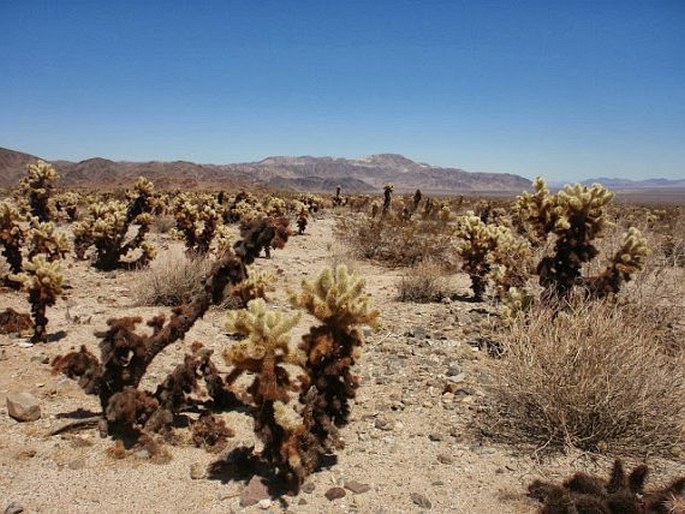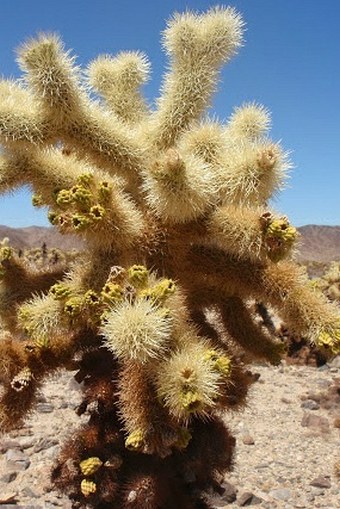Syn.: Grusonia bigelovii (Engelm.) G. D. Rowley, Opuntia bigelovii Engelm.
Family: Cactaceae Juss.

Distribution: Endemic species of the Madrean Region – southwestern part of USA (Arizona, southeastern California, southern Nevada) and northwestern Mexico (Baja California, Sonora).
Ecology: It grows in Mojave and Sonoran deserts, on sandy flats, gravelly to rocky washes, dry rocky slopes, at elevations from 300 to 900 m. It blooms from February to May.

Description: Shrub or small cactus tree, branched, with older branches at base of crown dark brown, clinging to usually solitary trunk, 0.3–1.5(–3) m. Stem segments whorled or subwhorled, green to gray-green, 4–13(–18) × (2–)4–5.5 cm; areoles elliptic-deltate, 5–6 × 3–4 mm; wool white-yellow to brownish, aging gray. Spines (8–)10–15 per areole, pale yellow to yellow to tan, aging brown, spines erect to spreading, terete to flattened, 15–28 mm. Glochids in broad adaxial crescent, sometimes extending along areole margins, yellow, 3–4 mm. Tepals pale green to whitish, 15–25 mm. Fruits usually sterile, yellow at maturity, cylindric to broadly obconic, 15–40 mm long.
Threat and protection: It is endangered species in Arizona and Nevada, also shown in the list of plants protected by the Convention on International Trade in Endangered Species (CITES).



These images were taken in USA, California, Joshua Tree National Park (by Pavlína Zahradníková, August 2013).


